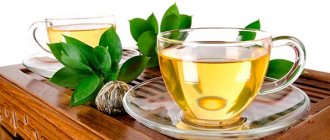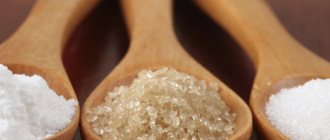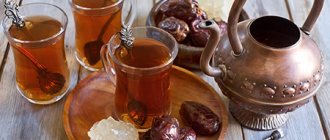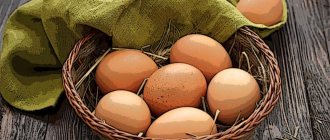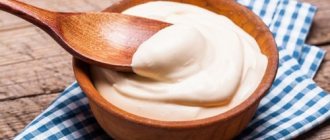Benefits of cauliflower
When diagnosing pancreatitis, adherence to a certain diet is inevitable. In the acute phase, it is very important to reduce the load on the pancreas. In this regard, the patient’s diet should include easily digestible foods with low fiber content.
Many patients doubt whether it is possible to eat cabbage with pancreatitis, as they assume that such a vegetable can cause painful flatulence in the intestines. But, as it turned out, this opinion is considered erroneous, and there is reasoned confirmation of this.
Cauliflower is quite often included in dishes that are recommended for pancreatitis, gastritis, liver damage, and peptic ulcers. This vegetable is a supplier of vitamins A and C, contains large amounts of iron, potassium, magnesium, as well as various acids and pectin. Cauliflower also contains valuable vitamin U, which:
- neutralizes toxins and reduces their levels in the body;
- normalizes acidity levels;
- activates metabolic processes;
- reduces the likelihood of constipation.
In addition, scientists have proven the antitumor effect of cauliflower, as well as its participation in reducing cholesterol levels in blood vessels.
Chemical composition and calorie content of the product
Cauliflower contains many nutrients. It contains antioxidants that reduce the effects of free radicals on the body. Of the phytonutrients, the vegetable contains a lot of vitamin B, which is necessary for the production of DNA and other genetic material, and is also involved in the process of cell division.
The vitamins C and K it contains increase immunity and protect cells from inflammatory processes.
100 g of raw cauliflower contains 25 calories, and also:
- 0 g fat;
- 5 g carbohydrates;
- 2 g protein.
Did you know? Cauliflower is believed to be native to the Mediterranean region. Here its history goes back more than 2000 years.
Like all vegetables, cauliflower is a carbohydrate. But not simple, but complex, with a lot of natural sugar, so it is perfect for people who control the amount of carbohydrates they consume and use a diet for weight loss, as well as for diabetics.
The vegetable contains no fat and contains very little vegetable protein. Therefore, if you need to add proteins to your diet, you will have to find another source of their supply.
Find out if cauliflower leaves are edible.
100 g of product contains (% of daily value):
- thiamine (B1) - 4%;
- riboflavin (B2) - 3%;
- niacin (B3) - 5%;
- vitamin B5 - 13%;
- vitamin B6 - 14%;
- vitamin C - 58%;
- vitamin E - 1%;
- vitamin K - 15%;
- calcium - 2%;
- iron - 3%;
- magnesium - 4%;
- manganese - 7%;
- phosphorus - 6%;
- potassium - 6%;
- sodium - 2%;
- zinc - 3%.
In what form can the vegetable be consumed?
Cauliflower for pancreatitis should be consumed in strictly limited quantities and only after heat treatment. Nutritionists do not recommend eating this vegetable as a separate dish. Cauliflower should be added to soups, casseroles, and vegetable stews in a puree form.
In case of chronic pancreatitis or during an exacerbation of the disease, the vegetable should be introduced into the diet in small doses. It is important to carefully monitor the body’s reaction. There are cases when the patient experiences colic, bloating and nausea. If such symptoms appear, cauliflower should be immediately excluded from the diet.
The daily intake of cauliflower should be no more than 100 g, and we are talking only about boiled vegetables. Fried and baked cabbage is not allowed to be consumed if the functionality of the pancreas is impaired. Quite often, cauliflower is steamed. This cooking method allows you to preserve maximum nutrients in the product. Also, during steam treatment, the amount of essential oil decreases.
Features of use
For pancreatitis, cauliflower is allowed in small portions and after cooking - stewed or boiled. It is not recommended to eat it fresh. According to nutritionists, it would be better to consume it not separately, but as part of other dishes. It is added to soup, casseroles, vegetable stews with zucchini, and can also be eaten as a puree side dish.
For pancreatitis, it is recommended to introduce vegetables into the menu in small portions, starting with 2-3 tbsp. l. puree.
If bloating and colic are not observed after consumption, you can gradually increase the volume of the ingredient. If unpleasant symptoms appear in the abdominal area, it is better to stop using the product.
During pancreatitis, the norm should not exceed 100 g of boiled vegetables. Fried or baked cabbage is prohibited if pancreatic function is impaired.
Fried or baked cabbage is prohibited if pancreatic function is impaired.
To preserve all the necessary vitamins and minerals, as well as reduce the content of essential oils in the vegetable, it is steamed. This cooking method is suitable for people with pancreatitis.
In acute form
Cauliflower is almost devoid of calories and fiber and has a delicate texture, so it is allowed for acute pancreatitis.
You can add it to dishes from the second week after an exacerbation.
Boiled inflorescences are ground into puree and consumed in the form of soups or as side dishes for lean meat. It is not advisable to consume it every day, since the vegetable stimulates the secretion of the stomach and pancreas.
In the chronic stage
In the chronic stage of pancreatitis, this vegetable should be introduced into the menu gradually, while continuing to monitor your well-being. If colic and bloating make themselves felt, then you should stop eating cabbage.
If colic and bloating make themselves felt, then you should stop eating cauliflower.
During remission
Patients are prescribed to eat boiled, oven-cooked and microwaved cauliflower dishes. To give good taste, the inflorescences are allowed to be baked in a protein-milk sauce. Marinated or fried cauliflower in batter is strictly prohibited during remission of pancreatitis.
During exacerbation of the disease
In case of exacerbation of pancreatitis, it is allowed to eat cauliflower, but already in the second week after painful attacks of the pathology.
During the period of exacerbation of the disease, pureed soups and steamed dishes with the addition of cabbage will be useful.
But you don’t need to eat them every day, because the vegetable enhances the secretory function of the stomach and pancreas.
There is no need to eat cauliflower soups every day, as this vegetable enhances the secretory function of the pancreas.
Recipes for pancreatitis
In dietary cooking, you can use fresh or frozen cabbage. When choosing a vegetable, you should give preference to white inflorescences. If there are black specks on the vegetable, this indicates that the cabbage has been stored for a long time and may have lost a number of useful microelements.
Before cooking the head of cabbage, small inflorescences are disassembled. To give the product a whiter color, add a little sugar to the boiling water. Young heads of cabbage are cooked for no more than 10-15 minutes. The finished product should be easy to prick with a fork.
Cauliflower soup with chicken
This dish is high in protein, has a delicate consistency and is easily digestible by the gastrointestinal tract.
To prepare the soup you will need:
- chicken breast – 0.5 kg;
- potatoes – 2 pcs.;
- carrots – 1 pc.;
- cauliflower – 6 large inflorescences;
- salt.
First of all, you need to cook the chicken meat. To do this, fill the breast with water and place it on the stove. After the broth boils, you need to drain it, rinse the meat, add cold water again and boil. After 30 minutes, the meat must be removed from the broth and minced twice.
Add prepared vegetables to the hot broth, add salt and cook until fully cooked. The ratio of vegetable mass and water should be the same. After all the ingredients become soft, they need to be cooled a little and blended with a blender. Add minced chicken to the resulting mass. Before serving, add a little sour cream to the serving.
Cauliflower Casserole
This recipe is quite easy to prepare and contains only approved ingredients. To prepare it you will need:
- cauliflower – 300 g;
- carrots – 1 pc.;
- wheat crackers – 15-20 g;
- milk – 50 ml;
- egg – 1 pc.;
- a little hard cheese;
- butter – 5 g.
Cauliflower inflorescences need to be boiled in salted water. Then the vegetable needs to be cut into small pieces. Next, you need to boil the carrots in the remaining broth and then grate them on a coarse grater. Soak wheat crackers in milk.
To prepare the filling, you need to beat the white and grind the yolk with butter. Then combine the ingredients and add grated cheese to the mixture. Salt the mixture to taste.
Cabbage puree
Puree-based foods are especially beneficial for pancreatitis, especially if they are made from vegetables. To prepare cabbage puree you will need:
- a glass of vegetable broth;
- 125 ml milk;
- egg yolk;
- 0.5 kg cauliflower;
- salt;
- 2 tbsp. l. butter;
- 1 tbsp. l. flour.
Cauliflower inflorescences are boiled in salted water. After which the vegetables are placed in a colander, and after the excess water has drained, they are pureed.
Wheat flour needs to be dried a little in a hot frying pan, but the color of the product should not change. Then the prepared flour is diluted with milk and vegetable broth and cooked for 5-7 minutes.
At the end of cooking, the milk sauce is combined with cabbage puree, and butter and whipped yolk are added to the mixture. The puree should be consumed only warm.
When diagnosing pancreatitis, cauliflower is allowed to be eaten only in boiled form. This vegetable is well absorbed by the body, does not overload the pancreas and is a supplier of useful microelements and vitamins, which are very important during the recovery period.
Cabbage for pancreatitis can be beneficial or harmful to the patient’s body. The effect of consuming the vegetable depends on the form and stage of the pathology and the type of cabbage chosen. You should consult your doctor to receive individual recommendations and select appropriate dosages.
Cabbage for pancreatitis can be beneficial or harmful to the patient’s body.
Is it possible
In order not to harm your health, you should choose vegetable varieties that are allowed for illness. It is better to do this together with a doctor, since a person cannot always correctly assess his condition on his own.
Allowed varieties should be introduced into the diet in small portions.
Carefully monitor your body's reaction. If discomfort, heaviness, pain and other unpleasant symptoms appear after eating, you should discard the product and consult a doctor. If there is no negative reaction, you can gradually increase the dosage.
Beijing
Suitable for patients with the chronic stage of the disease. The leaves contain soft fiber and many useful substances: vitamins, minerals, pectins. The product is easily digested and does not create excessive stress on the digestive organs. Stewing and cooking are acceptable. Can be eaten in combination with zucchini and carrots, or added to vegetable stew.
In acute pancreatic inflammation, eating Chinese cabbage is not recommended.
Colored
This type of cabbage has a low fiber content. This low-calorie product helps eliminate waste and toxins, eliminates constipation, reduces acidity, and saturates the body with vitamins and minerals. You can eat it in the chronic stage of the disease in the form of puree or as an ingredient in other dishes. It is allowed to boil, stew without oil, bake, steam.
Broccoli
Broccoli is introduced into the diet after pumpkin and potatoes. This vegetable contains vegetable proteins, chlorophyll, and a large amount of vitamins and minerals that are beneficial for the damaged gland.
Among the types of heat treatment, during exacerbation of the disease, preference should be given to cooking.
During remission, stewing and baking are acceptable. The vegetable will also be useful for cholecystopancreatitis.
Marine
Eating kelp will be beneficial for chronic pancreatitis. During an exacerbation, discard the seaweed.
Eating kelp will be beneficial for chronic pancreatitis.
Give preference to fresh and frozen kelp. You shouldn't buy pickled ones. Do not buy store-bought salads in plastic packages: they often add salt, spices, vegetable oil, and prohibited ingredients that irritate the mucous membranes of the patient’s internal organs. Before use, the seaweed must be subjected to heat treatment. Boil them or stew them without oil.
Savoy
If you have inflammation of the pancreas, savoy cabbage is prohibited. It stimulates the production of gastric juice and pancreatic enzymes, which may worsen the patient’s condition.
White cabbage
During acute pancreatitis and during exacerbation of chronic pancreatitis, this vegetable is prohibited. It can be introduced into the diet only during stable remission.
It is better to eat a young plant.
It is acceptable to use a small amount of white cabbage as a secondary ingredient. Excessive consumption may harm the patient. A large amount of fiber can cause flatulence, bloating, discomfort, and pain.
White cabbage will help relieve bloating.
Red cabbage
Red cabbage contains a lot of fiber. In acute forms of the disease, you should not eat it. During stable remission, it is allowed to introduce a small amount of thermally processed vegetables into the patient’s menu.
You should carefully monitor your body's reaction to the product.
If unpleasant symptoms appear, you should immediately stop using this variety and consult a gastroenterologist.
Chinese cabbage - benefits, contraindications, recipes
Chinese cabbage is a tasty and healthy vegetable. Most often used for preparing salads, less often - main courses. It has a rich chemical composition. In addition to cooking, it is used in dietetics, cosmetology, and folk medicine. It is considered beneficial for digestion, normalizes blood pressure and strengthens the immune system. Used for insomnia and cough.
Chinese cabbage successfully combines tenderness, juiciness and health benefits. The taste is a cross between white cabbage and green salad. The vegetable does not lose vitamins during storage, is rarely treated with chemicals during cultivation, and is considered a dietary product. What are the benefits of Chinese cabbage, and are there any contraindications to its use?
What is Chinese cabbage?
In nature, the plant is a biennial. It is grown in culture as an annual. The popular name that came from the East is petsai. Depending on the variety, the fragile leaves form a loose head or a loose rosette. The leaves are slightly wavy and pimply. A dense white vein runs through the center.
The color of the leaves ranges from bright green to yellowish. In cross section, the head of cabbage is yellow-green. The first harvest is harvested in June, the harvest continues throughout the summer, depending on the sowing time.
According to some sources, the vegetable has been grown in China for more than 5,000 years. Easterners believe that daily or frequent inclusion of cabbage in the menu increases life expectancy.
Chemical composition
The chemical composition of Chinese cabbage is rich in vitamins, micro and macroelements. Calorie content of fresh leaves is 16 kcal per 100 g.
Buy as many vegetables as you can eat in one week. When stored for a long time, it becomes sluggish and loses its crunch. It is correct to store Chinese cabbage in the lower section of the refrigerator, first tightly wrapping it in cling film. You cannot keep the head of cabbage in the light - the leaves will turn green and become rougher.
Rules for choosing a vegetable
Only fresh, high-quality cabbage will bring real benefits, it will be juicy and tasty. When choosing a vegetable, five criteria are followed.
- Appearance of leaves. They should be strong; discard any withered and lethargic ones immediately.
- Head color. Green heads of cabbage are more fibrous. Light ones are more juicy and fragile.
- Density. The head of cabbage is of medium density - not hard, but not fluffy either, elastic to the touch.
- Size. Choose medium-weight heads of cabbage - they are the most juicy and healthy.
- Freshness. Packed cabbage is inspected extremely carefully. Condensation must not accumulate on the inner surface of the bag. A good product has whole leaves, without spots, dried out or yellowed areas.
Wash cabbage immediately before cooking. First, it is disassembled into leaves and each leaf is washed separately.
What are the benefits of Chinese cabbage?
What are the health benefits of Chinese cabbage? It is superior to many vegetables in terms of the content of valuable substances and vitamins. The leaves do not need to be boiled. The greatest benefit comes from using Chinese cabbage in fresh, raw form. The following properties are especially valued:
- relieves fatigue;
- increases performance;
- increases appetite;
- normalizes the emotional background;
- improves heart function;
- smoothes the symptoms of atherosclerosis;
- eliminates frequent constipation;
- stimulates the gastrointestinal tract;
- normalizes high blood pressure;
- reduces glucose levels in diabetes mellitus;
- relieves stomach ulcers and gastritis;
- strengthens the immune system;
- relieves swelling;
- accelerates the treatment of anemia;
- cleanses the blood;
- removes toxins;
- reduces the severity of allergies;
- reduces pain in gout.
Petsai is useful during pregnancy and breastfeeding. At this time, good nutrition is important for a woman. The vegetable saturates the body with iodine, potassium, vitamins and other valuable substances.
Interesting: What kind of bulgur grain is this, what is the benefit and possible harm
To whom Chinese cabbage is contraindicated and possible harm
Chinese cabbage is a hypoallergenic vegetable rich in vitamins. The harm of Chinese cabbage is insignificant compared to its benefits.
Contraindications are limited to problems with the gastrointestinal tract. It is not recommended to abuse the vegetable during exacerbation of cholecystitis, pancreatitis, gastritis with high acidity. The vegetable will aggravate the condition of diarrhea, flatulence, and colic.
Chinese cabbage is incompatible with dairy and fermented milk products. Using it simultaneously with cottage cheese, sour cream, and cheeses provokes diarrhea.
There is always a possibility of purchasing a vegetable with a high content of nitrates. Before cooking, the head of cabbage is soaked for an hour and a half in clean water, then washed under the tap.
Medicinal recipes
The beneficial properties of Chinese cabbage are used to treat diseases. More often it is included in the diet in fresh, boiled, or stewed form. Sometimes decoctions are prepared based on the vegetable.
- Insomnia. You need to prepare a decoction of Chinese cabbage. About 150 g of leaves are poured with 350 ml of water and boiled over low heat for half an hour. Strain and take a glass at night.
- Mastopathy. The leaf is washed under running water, lightly sprinkled with salt and kneaded. When the juice comes out, apply it to the sore spot. Additionally, freshly squeezed juice from Chinese cabbage is taken orally.
- Cough. The leaves are immersed in hot water for a few minutes. Drain the liquid and apply a thin layer of liquid honey to the surface of the leaves. The leaves are applied to the chest and back, with honey to the skin. Secure with cling film, bandage, and put on a tight-fitting T-shirt. The compress is left overnight.
- Bronchial asthma. Throw 20 g of Chinese cabbage seeds into a glass of boiling water. Pour into a saucepan, bring to a boil, and simmer over low heat for up to half an hour. Take chilled, half a glass twice a day.
- Inflamed eyelids. Boil the cabbage, mash, add a little olive oil. The mass is applied to closed eyelids and left for up to half an hour.
Chinese cabbage is useful not only for women, but also for men. Including vegetables in the daily diet prevents prostate diseases and has a positive effect on sexual activity.
How is Chinese cabbage used in dietetics?
Chinese cabbage is often used for weight loss. With a low calorie content, it creates a feeling of satiety and supplies the body with essential vitamins and minerals. Fiber promotes the removal of toxins, cleanses the intestines, and stimulates its functioning. Chinese cabbage is considered to have negative calories. The body spends a lot of energy to digest it.
During the diet, the vegetable can be eaten in any quantity.
The essence of the diet
The diet is based on vegetable salads made from raw Chinese cabbage and lean boiled meat. You are allowed to eat up to 400 g per day of boiled beef, chicken, and turkey.
Protein foods are eaten in the first half of the day. After 18:00 only lean salads are allowed. The diet is designed for a week. Its developers promise a weight reduction of 3-4 kg.
Examples of low-calorie dishes
Beijing cabbage goes well with chicken and seafood. Lenten salads made from fresh vegetables and herbs are more suitable for the diet. The most common are three recipes.
- Base. Cut the required amount of cabbage and add a little salt. For dressing, mix a spoonful of lemon juice and sunflower oil.
- With greens. Leaves are chopped into small pieces. Finely chop a bunch of any greenery - a mixture of parsley, basil, dill, rosemary, cilantro. Mix all the ingredients, add salt, season with olive oil and lemon juice.
- Japanese. Cut equal amounts of fresh cucumber and Chinese cabbage. For the dressing, mix a grated clove of garlic and a couple of tablespoons of soy sauce. Stir and sprinkle with sesame seeds.
Many people don't like the taste of the thick white vein. To get the most out of the vegetable, there is no need to cut it out - it contains much more valuable substances than the tender leaves. The veins are eaten fresh, pickled, fermented, and salted.
Use in cosmetology
Cabbage juice and leaves are used as a natural cosmetic. Chinese cabbage contains many vitamins, microelements and acids necessary for healthy skin. The most common are three recipes.
- Enlarged pores. The juice is squeezed out of the white part of the leaves and wiped on the face daily. Excess oil disappears and pores become smaller.
- Dry skin. The leaves are scalded with boiling water, the dense white part is lightly beaten with a hammer. The surface of the leaves is smeared with a small amount of olive oil and applied to the face. Keep for 20 minutes, remove, wash with chamomile decoction.
- Peeling. The leaves are boiled in milk and crushed in a blender. The mass is applied to the face and kept for up to half an hour.
Chinese cabbage is good for dandruff. The scalp is lubricated with vegetable oil, and crushed fresh leaves are placed on top. For severe dandruff, repeat the procedure twice a day for two weeks.
Cooking tips
Salad is found in the cuisine of different countries. In European countries it is eaten mainly fresh. Japanese cuisine offers dishes made from fresh and boiled Chinese cabbage. Asians prefer to pickle it.
Salads
The most common way to prepare Chinese cabbage is in various salads. The leaves are usually not cut, but torn into small pieces by hand. The vegetable goes well with other fresh vegetables, seafood, sausages, ham, and meat. Salads are dressed mainly with vegetable oil, soy sauce, and less often with mayonnaise. It is not recommended to use cream and yogurt as a dressing.
Second courses
Some recipes require heat treatment of the vegetable. Cooking is replaced by quick blanching for 15–20 seconds in salted boiling water. Delicious casseroles and rolls are prepared from Chinese cabbage, and they are used instead of white cabbage when preparing cabbage rolls. Petsai dishes are usually served with mushroom sauce or sour cream.
The lower part of the head of cabbage can become an additional source of vitamins in winter. It is carefully cut off and placed in water. In a few days, roots will appear from the stalk. Cabbage is transplanted into the ground. Young green leaves emerge from the core and can be added to salads.
Reviews of Chinese cabbage confirm that the vegetable has earned the love of adherents of a healthy and tasty diet for good reason. Low calorie content, abundance of vitamins, and fiber make Chinese cabbage an indispensable product for maintaining good physical shape.
Source
Source: https://organicfact.ru/pekinskaya-kapusta/
Cooking methods and recipes
When the pancreas is inflamed, it is important to prepare food properly. It is prohibited to salt, fry, or season with store-bought sauces.
The dishes should not contain components prohibited for the patient.
Food must be fresh. Temperature is also important: food that is too warm or too cold is harmful. Dishes should be cooled to +35…+40°C.
Boiled
Boiled cabbage is used to make pureed soups and one-component purees. In case of persistent remission, it is allowed to add a small amount of greens, a pinch of salt, ½ tsp to the puree. vegetable oil.
Stewed
You need to simmer without oil. Use water, vegetable broth. In case of stable remission, stewing in milk is acceptable. Stewed vegetables soften, which avoids mechanical damage to the mucous membranes of internal organs.
Stewed cabbage can be used as a component of vegetable stew.
Cabbage prepared in this way can be used as a component of vegetable stew. It is useful to combine it with young zucchini and carrots.
Pickled
You should not eat sauerkraut if you have pancreatic disease. It is too acidic for the damaged organ, contains salt, and is rich in coarse fiber.
Some experts claim that the juice of cabbage fermented according to a special recipe can be beneficial for the patient.
The liquid is taken 50 ml per day. It helps normalize blood sugar levels.
Salad
For salad, you can use heat-treated cabbage. Only Peking is allowed to be consumed fresh. To prepare the salad, take 200 g of cabbage leaves, 2 pre-boiled chicken fillets, 3 eggs, a small boiled carrot and 1-2 tbsp. l. low-fat sour cream. Grind all ingredients and season with sour cream. You are allowed to add a pinch of salt.
The patient will benefit from creamy soups made from broccoli or cauliflower. To make them, take 4-5 inflorescences, 1 large potato, 1 carrot. Vegetables are washed, peeled, boiled, and blended into a puree. For persistent remission, you can add 1 tbsp. l. low-fat sour cream or cream, up to 30 g of cheese, a pinch of salt.
Some monotony of nutrition during inflammation of the pancreas forces you to look for something new. The diet is especially lacking in vegetables, such as cabbage - familiar, accessible and irreplaceable.
It is good pickled, raw in salads, cooked in casseroles. However, patients with pancreatitis become quite suspicious, and bodily suffering prompts caution. Reasoning appears - is it possible, is it useful, is it harmful. Cabbage for pancreatitis is also subject to careful analysis by scrupulous patients.
Many species allow you to find the variety that can be used in dishes with damage to the pancreas.
What types of cabbage are there and how does it affect the pancreas?
In addition to the usual white cabbage, there are other types:
- Beijing. The calorie content of this type is only 13 kcal per 100g. Its neutral taste goes well with all components of salads or side dishes. Contains amino acids that increase the body's resistance to microbes, viruses, and bacteria. Cleanses the mucous membranes of the intestines and stomach from toxins, prevents constipation. Do not consume with milk; severe diarrhea will result. Can be consumed raw for pancreatitis in the cold season.
- Colored. Contains citric and malic acids, which enhances the production of hydrochloric acid. Very easy to digest due to its delicate texture. Cauliflower for pancreatitis is allowed when the symptoms subside in heat-treated form.
- Brussels. Like other species, it contains a lot of ascorbic acid, which is useful for strengthening the immune system. Useful for diseases of the liver, endocrine and nervous systems. Its juice regenerates the functions of the pancreas and stimulates the production of enzymes. In the acute period of the disease, Brussels sprouts are prohibited, but in the case of a chronic inflammatory process, they are allowed in stewed form. You need to simmer for no longer than 5 minutes. Contraindications for use are increased acidity and intestinal spasms.
- Broccoli . Broccoli contains less fiber compared to other types, which is good for the pancreas. Broccoli is one of the first vegetables that are introduced into a patient’s diet after acute pancreatitis or exacerbation of chronic pancreatitis. This cabbage contains sulforaphane, a cancer cell growth blocker. Broccoli is an ideal food for people weakened by illness, diabetics.
- Savoy. Very nutritious and at the same time low-calorie variety. It has a lot of positive properties: relieves nervous excitement, regulates blood sugar levels, improves vision, activates digestion. Because it stimulates the activity of the gallbladder, pancreas and stomach, savoy cabbage is prohibited for pancreatitis.
- Kohlrabi . An unusual cabbage whose taste is reminiscent of both broccoli and radishes. The young outer leaves have a similar taste to spinach and lettuce and are edible. Kohlrabi contains B vitamins that benefit the nervous system. It has a diuretic and laxative effect, removes waste from the intestines and stops inflammation in it. In case of high acidity and acute pancreatitis, kohlrabi is prohibited.
- Leafy. This cabbage is otherwise called kale. It contains oxalates and is not recommended for use by people with kidney stones and gallstones.
- Red cabbage. It is a type of white cabbage, but with a more bitter taste. It contains vitamins B, PP, C, and carotene. Red cabbage also contains iron, potassium, and magnesium. It stimulates the secretion of the digestive organs, therefore it is prohibited in case of inflammation of the pancreas.
- Romanesco. Contains too much coarse fiber, increases peristalsis. This type is prohibited for pancreatitis.
Is it possible or not to use Chinese cabbage for pancreatitis? Is it possible to have cabbage rolls for pancreatitis?
White cabbage is completely excluded from the menu during an exacerbation of the disease, since this vegetable contains a large amount of fiber, which has an irritating effect on the mucous membranes of the digestive system.
But Chinese cabbage for pancreatitis can be used for making side dishes and salads. The vegetable consists of 95% water, the fiber content is minimal. Therefore, the pancreas does not have such a negative effect as when consuming the white cabbage variety.
Benefit:
- lysine, which stimulates the restoration and growth of damaged tissues.
- The fibers of the product are soft and do not irritate organs.
- almost a complete set of microelements necessary for humans.
- Low calorie, no fat.
- Allows you to eliminate vitamin deficiency and increase the absorption of nutrients.
But you can’t overuse Chinese cabbage. Before introducing it into the diet, it is recommended to consult a gastroenterologist. Otherwise, the body may be harmed and there is a high risk of exacerbation of pancreatitis.
2Features of use
To ensure that dishes with Chinese cabbage do not harm your health, you must follow several rules.
3Cooking methods and recipes
There are many culinary recipes with Chinese cabbage, but most of them are prohibited for pancreatitis.
Only a few preparation methods are permitted. Such dishes do not have irritating qualities and do not provoke inflammation of the pancreas.
Meat and fish dishes for diet
Therapeutic nutrition for patients with pancreatitis is very limited.
In addition to flour, you cannot eat such favorite dishes as jellied meat, which is prepared on the basis of steep meat broth, lard, and with some reservation this also includes rolls, eaten with spicy seasonings and snacks, without which, however, sushi and similar The dishes are quite suitable for pancreatitis. In this sense, red, black or salmon caviar is quite acceptable for this disease, but taking into account everything that has already been said about bread, as well as limiting related products: butter, sour cream, mayonnaise.
But you can eat all types of meat dishes from low-fat varieties: pork, beef, chicken and fish.
The patient should not eat jellied meat, which is cooked in a strong meat broth.
Housewives understand that this is:
- goulash;
- meatballs, meatballs, steam cutlets;
- fish baked with bechamel;
- meatloaf.
You can have baked or stewed stuffed peppers, cabbage rolls in grape leaves, but you cannot have the usual version of the dish with cabbage.
It is advisable to use exclusively the sirloin portion of chicken, boiled or baked, but not fried. In this sense, dishes that combine stewing meat with vegetables or fruits: carrots, apples are well suited. Recipes that call for a dressing with mayonnaise sauce can be modified to include Dutch cheese or low-fat yogurt.
Stewed chicken fillet is perfect for the diet of a patient with pancreatitis.
It should be noted that you should not eat smoked meats, dried foods, as well as sausages, sausages, and canned food.
Nuts, seeds and honey - which of these foods is prohibited?
Let's start with nuts, which contain a large amount of fiber and are therefore completely undesirable. This is especially true for peanuts, hazelnuts and pistachios. Walnuts and cashews have less fiber, so you can snack on them, but only after at least six months have passed since the last exacerbation of the disease.
We also recommend viewing: Comprehensive treatment of pancreatitis will improve the patient’s quality of life
Problems with the pancreas are a good reason to forget about the habit of cracking seeds once and for all. Sunflower seeds are too high in calories. But adding a little flax, sesame or pumpkin seeds to the salad is an original idea, completely approved by nutritionists.
As for those with a sweet tooth, they can, of course, visit pastry shops during the next relapse of pancreatitis, but they cannot try anything. If you really want to sweeten something, it is better to use sweeteners.
You will have to forget about chocolate, sweet fluffy buns and cakes forever.
But there is also good news: over time, when exacerbations cease to bother you and the disease enters the stage of remission, you can gradually enjoy honey, jam, marshmallows, marmalade and marshmallows.
Does the cooking method matter?
The method of preparing cabbage is of great importance in this matter. One of the most common in our country is pickling. However, for any disease of the pancreas and in any condition (acute or chronic), the use of this dish is strictly prohibited for many reasons.
Let us list the reasons why pickled vegetables should not be used for pancreatitis.:
- Acids irritate the mucous membrane of the stomach and intestines.
- Increased gastrointestinal motility negatively affects bile secretion.
- A large amount of salts causes fluid retention and swelling. Swelling of pancreatic tissue increases pain and inflammation.
Another common way to prepare cabbage is stewing . You can add other vegetables, such as carrots.
Attention! During cooking, you should not add onions, garlic, hot herbs or any spices, as they increase the activity of the digestive glands.
Read more about the properties of cabbage for which diseases you should refrain from consuming it here.
Can I eat?
Important! The most attractive from the point of view of the pancreas are broccoli, cauliflower and Chinese cabbage. They diversify the patient’s menu by being included in various dishes. In general, these varieties of healthy vegetables are quite well tolerated without causing undesirable symptoms.
Summarizing, we can conclude that if there is inflammation in the pancreas, cabbage can sometimes be used for cooking. It is permissible to do this outside of exacerbations.
The final decision whether or not cabbage is acceptable for pancreatitis is made by the body. If after eating dishes with cabbage nothing bothers you, then it is permissible for a particular individual to eat it.
Benefits and potential harm
White cabbage is completely excluded from the menu during an exacerbation of the disease, since this vegetable contains a large amount of fiber, which has an irritating effect on the mucous membranes of the digestive system.
But Chinese cabbage for pancreatitis can be used for making side dishes and salads. The vegetable consists of 95% water, the fiber content is minimal. Therefore, the pancreas does not have such a negative effect as when consuming the white cabbage variety.
- Lysine content, which stimulates the restoration and growth of damaged tissues.
- The fibers of the product are soft and do not irritate organs.
- Contains almost the full range of microelements necessary for humans.
- Low calorie, no fat.
- Allows you to eliminate vitamin deficiency and increase the absorption of nutrients.
But you can’t overuse Chinese cabbage. Before introducing it into the diet, it is recommended to consult a gastroenterologist. Otherwise, the body may be harmed and there is a high risk of exacerbation of pancreatitis.






